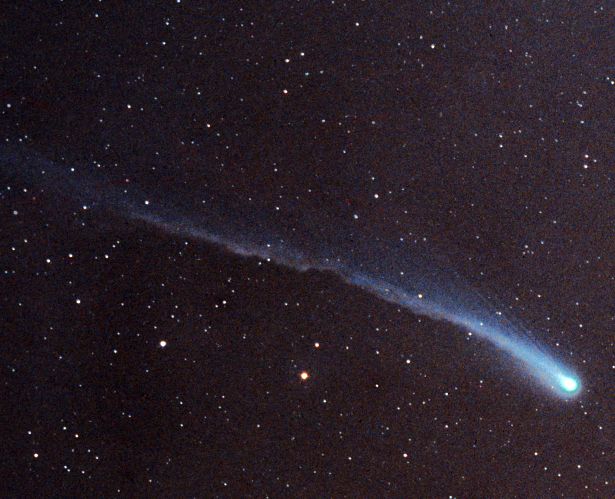Credit & Copyright: Gerald Rhemann
Explanation:
In the last
week, Comet
Ikeya-Zhang
has become
bright enough to be just visible to the unaided eye.
Based on its present activity,
observers are optimistic that
Ikeya-Zhang
will become substantially brighter.
This composite
color
image from March 3rd, captured with a wide-field
telescope, shows this
active
comet's bright, condensed coma and
a delightful array of subtle structures in its developing
tail.
The bluish tail stretches for 5 degrees or so against a background of
stars in the constellation Pisces.
In the coming days
look for the comet hanging low in the
western evening sky (below a bright yellowish Mars), eventually
becoming difficult to see in the March twilight.
But after April begins,
Ikeya-Zhang
will become a predawn object
climbing higher into the morning sky as the month progresses.
Cataloged as comet C/2002 C1,
improved orbit determinations now
make it seem very likely that Comet
Ikeya-Zhang has been around here before.
Refined calculations
indicate this comet's last trip through the
inner Solar System was 341
years ago, in 1661,
when it was recorded as a
bright comet.
1999 2000 2001 2002 2003 2004 2005 2006 2007 2008 2009 2010 2011 2012 2013 2014 2015 2016 2017 2018 2019 2020 2021 2022 2023 2024 2025 |
Yanvar' Fevral' Mart Aprel' Mai Iyun' Iyul' Avgust Sentyabr' Oktyabr' Noyabr' Dekabr' |
NASA Web Site Statements, Warnings, and Disclaimers
NASA Official: Jay Norris. Specific rights apply.
A service of: LHEA at NASA / GSFC
& Michigan Tech. U.
|
Publikacii s klyuchevymi slovami:
comet - comet Ikeya-Zhang - komety - kometa Ikeya-Zhanga
Publikacii so slovami: comet - comet Ikeya-Zhang - komety - kometa Ikeya-Zhanga | |
Sm. takzhe:
Vse publikacii na tu zhe temu >> | |
